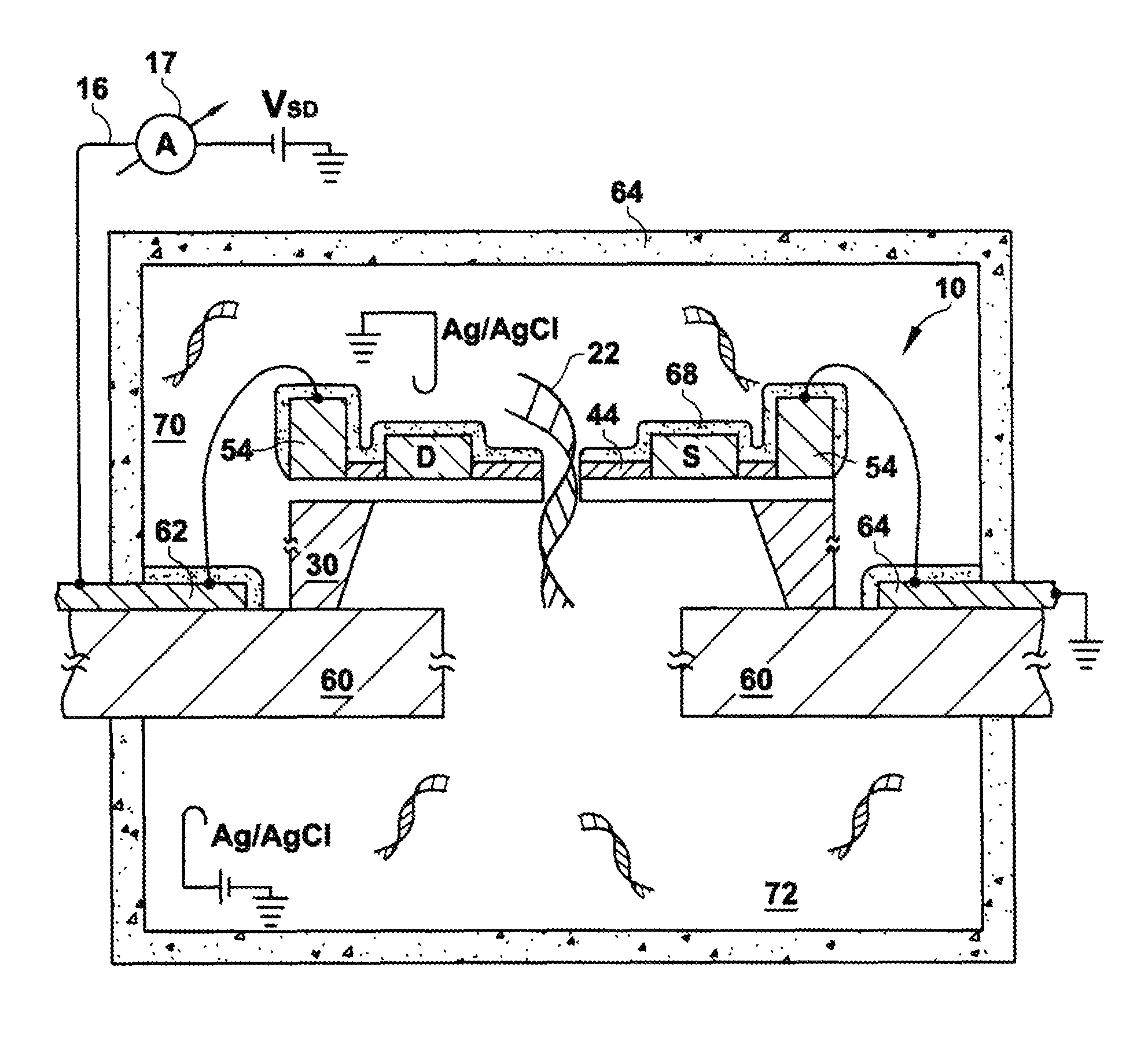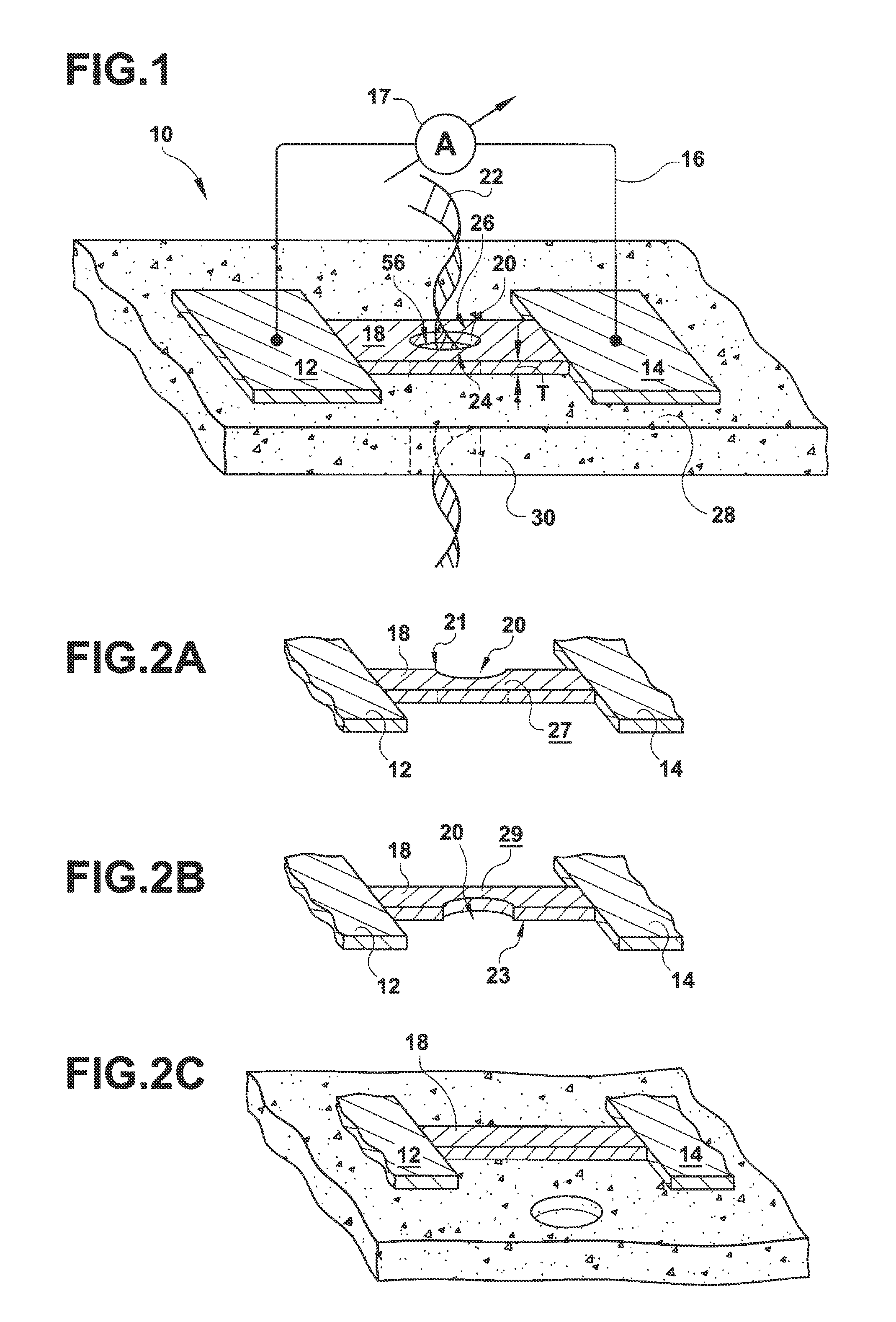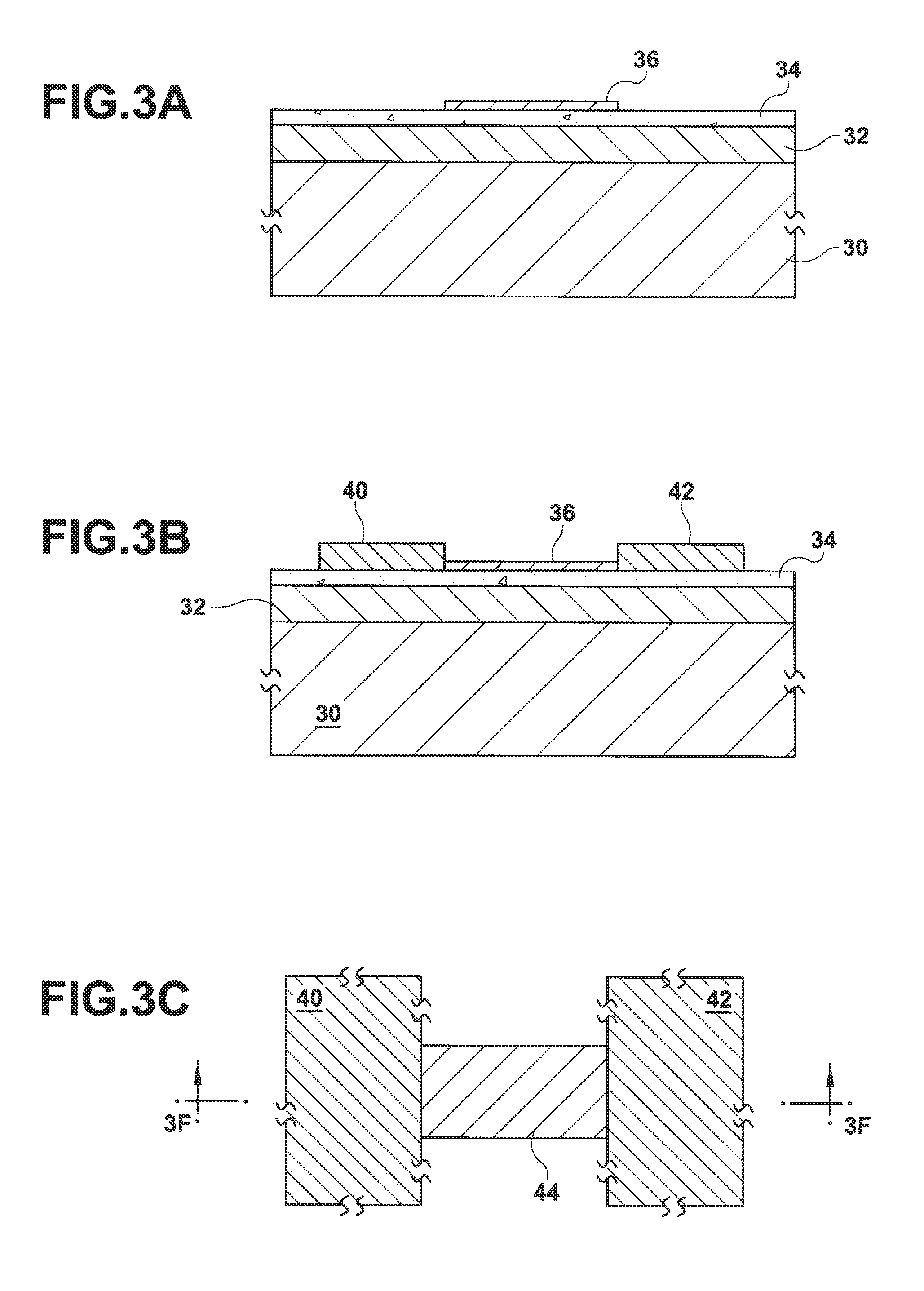High-resolution molecular sensor
a molecular sensor, high-resolution technology, applied in the field of nanoscale devices, can solve the problems of inability to achieve single nucleotide sensitivity, inability to discriminate, and small ionic current differences resulting from the translocation of different dna bases
- Summary
- Abstract
- Description
- Claims
- Application Information
AI Technical Summary
Benefits of technology
Problems solved by technology
Method used
Image
Examples
Embodiment Construction
[0020]Referring to FIG. 1, there is schematically represented an example implementation of the nanoscale sensor 10 of the invention. In this example, there is provided a field-effect transistor (FET) configuration in which an electrically conducting source region 12 and an electrically conducting drain region 14 are connected in a sensing circuit 16. Electrical current is injected and collected between the source and drain through a molecular sensing channel region 18. The molecular sensing channel region includes an aperture 20, preferably a nanopore, that is disposed centrally, at an edge of, or just adjacent to, the channel region. In the example of FIG. 1, the nanopore aperture is provided generally centrally to the channel region 18. Other aperture arrangements are described below. The channel region and source and drain regions are provided on a support structure 28 having an aperture 30 through the thickness thereof that is in communication with the nanopore 20 of the channel...
PUM
| Property | Measurement | Unit |
|---|---|---|
| diameter | aaaaa | aaaaa |
| diameter | aaaaa | aaaaa |
| diameter | aaaaa | aaaaa |
Abstract
Description
Claims
Application Information
 Login to View More
Login to View More - R&D
- Intellectual Property
- Life Sciences
- Materials
- Tech Scout
- Unparalleled Data Quality
- Higher Quality Content
- 60% Fewer Hallucinations
Browse by: Latest US Patents, China's latest patents, Technical Efficacy Thesaurus, Application Domain, Technology Topic, Popular Technical Reports.
© 2025 PatSnap. All rights reserved.Legal|Privacy policy|Modern Slavery Act Transparency Statement|Sitemap|About US| Contact US: help@patsnap.com



